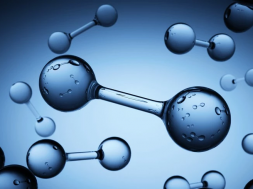
Beijing-supervised industry body calls for China to install100 GW of green hydrogen by 2030 – EQ Mag Pro
Beijing may be testing the reaction to a new China Hydrogen Alliance position paper as part of its preparations for a new national hydrogen strategy
China’s hydrogen industry body, which is supported and supervised by the government, is calling on Beijing to “strive” to install a whopping 100 gigawatts of green hydrogen electrolysers by 2030 in a new position paper released on Wednesday.
To put that in perspective, only 76MW of electrolysers are currently in operation around the world, according to the International Energy Agency’s Hydrogen Project Database, and while the global electrolyser manufacturing capacity is rising fast, it is only expected to reach an annual 3.1GW by the end of this year, says analyst BloombergNEF.
Installing 100GW of electrolysers by 2030 may sound like an impossibly ambitious task, but it seems unlikely that the China Hydrogen Alliance (CHA) will have released its Renewable Hydrogen 100 Initiative document without the prior approval of central government.
As the CHA explains on its English-language website: “The alliance is supported and supervised by the Ministry of Science and Technology, the Ministry of Industry and Information Technology, the Ministry of Finance, the Ministry of Transport, the State-owned Assets Supervision and Administration Commission of the State Council, the National Energy Administration, the National Development Bank, the Chinese Academy of Sciences, the Chinese Academy of Engineering, the China Association for Science, and the Technology and Standardization Administration.”
That is a lot of supervision. And with Beijing in the process of drawing up a new national hydrogen strategy, the government could be testing the reaction to this document to help guide its policymaking.
The CHA’s Renewable Hydrogen 100 Initiative document makes six calls for action:
- For China to support the installation of 100GW of electrolysers — and the gigawatt-scale renewable energy projects required to power them — by the end of the decade, as part of a “new power system with new energy as the mainstay”.
- For industry to jointly carry out research projects “to build a collaborative technology innovation model for production, education, research and use of hydrogen” and to promote cost reductions in green hydrogen.
- For the creation of a “unified renewable hydrogen market” based on an agreed system for the certification, distribution and application of green hydrogen.
- For the development of a renewable hydrogen policy support system that incorporates the production, supply and marketing of green hydrogen, as well as “efficient collaboration between upstream and downstream enterprises. This point adds that the government should encourage the use of green hydrogen in major projects such as the 2022 Beijing Winter Olympics and fuel-cell vehicle demonstration city clusters — which it is already doing.
- For the safe development of the industry, including an increase in risk assessment to “prevent and reduce production accidents”.
- To strengthen international cooperation in green hydrogen, including the creation of global standards and to “unblock” international renewable hydrogen investment and trade.
China is, by far, the largest hydrogen producer in the world, manufacturing 25 million tonnes of the stuff each year, out of a global total of about 70 million tonnes.
It is also the dirtiest hydrogen producer. While most of the world uses unabated natural gas to produce hydrogen, 62% of China’s supply comes from coal gasification, which emits 18-20 tonnes of carbon dioxide for every tonne of hydrogen produced (compared to 8-12 tonnes of CO2 from methane reforming).
The current global pipeline of announced gigawatt-scale green hydrogen projects around the world add up to more than 250GW. But none have received final approval, and most are not due to be completed until the late 2020s or early 2030s.
In most cases, governments need to come up with new regulatory frameworks and financial support mechanisms to enable green hydrogen projects to move forward and be profitable.
The world’s largest electrolyser in operation is currently a 20MW project in Canada.


















